2021 was a weird year on social media in the audiophile kingdom. We saw a lot of positive movement on Instagram where the community embraced a new generation of curious music listeners; and some less than friendly behavior on some audio forums where “objectivists” and “subjectivists” battled it out.
The “measurements” thing is nothing new but we think the community needs to take a massive chill pill and figure out a different path forward to not turn off the next generation.
Some other house cleaning as we begin the new year.
An ugly trend has developed on social media and in some audio forums regarding “Chi-fi” and we think there needs to be a wider community discussion about its use.
Whether we want to acknowledge or not, the use of the phrase “Chi-fi” has derogatory connotations. It was originally coined to reference the start-up Chinese audio industry and even then, it came with the understanding that the products being labeled as such were inferior to their more developed counterparts coming from the United States, Canada, U.K, France, Germany, Italy, Denmark, and Japan.
It parallels the early days of Japanese car sales in North America when it was not uncommon to hear them referred to as “Jap Junk” which was more blatantly racist and derogatory but also carried roughly the same sentiment.
For those who would argue that the term is merely a reference to where the products are being made, I ask the question, then why do we not have Kor-fi, Ger-fi, US-fi, and Jap-fi? We don’t identify other products by country of origin which goes to negate part of that argument.
The remainder of the argument can be quickly called out by the fact that people are quick to exclude certain Chinese-made products (HiFiMan as one example) as not qualifying as Chi-fi. If some products are excluded, what are the grounds for inclusion in the class? Obviously, it isn’t just the country of origin that is being used to make the distinction.
The term isn’t applied to Western brands whose products are produced in China. Many American, Canadian, and British brands have production facilities in China including KEF, NAD, Wharfedale, Quad, PSB, Cambridge Audio, Polk, and many others. Consumers seem perfectly fine buying those products manufactured in China because that reality saves them money.
What about companies that source parts from China but then assemble them elsewhere?
Campfire Audio faced a backlash for having some parts fabricated in China because their ad copy stated the product was American-made, while many other companies have been given a pass for moving production to China and using the term “Designed in” instead of “Made in” in their advertising.
How is a product designed in Germany and made on a Chinese production line, using Chinese parts and Chinese labor inherently better than a product designed in China? This seems to suggest that Chinese audio engineers are not as competent as those in the rest of the world.
There is a word for that right?
What percentage of the parts used in a product have to be made in China? Many Chinese brands are now using Sonion and Knowles drivers so essentially the shell is made in China, but the internals may all be made elsewhere.
Some of the boutique “Made in America” IEMs may have more Chinese-made parts than many that are labeled as “Chi-fi”.
Many will cite Chinese labor practices and intellectual property laws (or lack thereof) as reasons for disliking and avoiding Chinese-made products. There is no question that the situation in Xinjiang and the treatment of the Uyghurs is a major human rights issue and that some companies have chosen profit over people. Anger on social media in the West regarding the topic ranges from outright hostility towards the CCP to a weird level of indifference.
China’s suppression of free speech in Hong Kong should raise red flags throughout the West, but many only care about how cheaply they can get their new iPhone.
Meanwhile a lot of those same people continue to support Western companies that are benefitting from that same labor. If we are going to claim the moral high ground, don’t we have to be consistent about it and not support companies that are profiting from those practices?
The answer to what qualifies for the Chi-fi moniker unfortunately is perceived quality. The insinuation is that Chi-fi only encompasses low-quality Chinese-made products. If it was designed elsewhere it doesn’t qualify, and if it has a high enough price point, it doesn’t qualify. If that doesn’t smack of bigotry, I don’t know what does.
Honda very quickly proved that its “Jap Junk” could outlast Western offerings and is now known as one of the most reliable automobile brands in the world. Much the same, many of the budget Chinese IEMs offer construction quality that rivals anything on the market, and some have the sound quality to match, yet they still have this albatross of a moniker to overcome.
I think the time has come to retire the name, it may have started out as a somewhat catchy play on Chinese and Hi-Fi, but it has taken on a meaning that is insulting and counterproductive as the products being released today are quite competitive and don’t deserve to be branded with a term that has negative implications.
So, if we drop the term from our lexicon, what do we replace it with? I propose we don’t replace it. Like what we are seeing in so many places today, the fact that we feel the need to distinguish one from another is divisive and not helpful. Why can’t headphones just be headphones?
Related reading: Does the Audiophile Community Have a Problem?





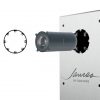














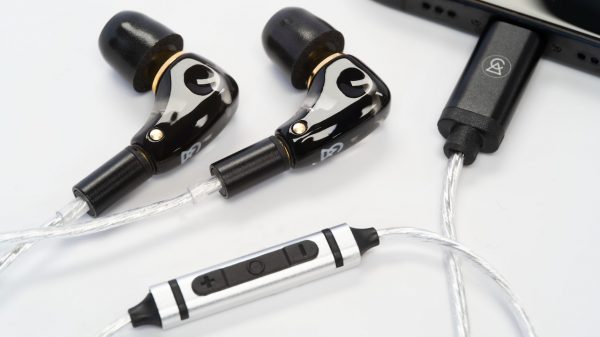
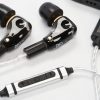

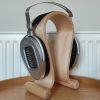
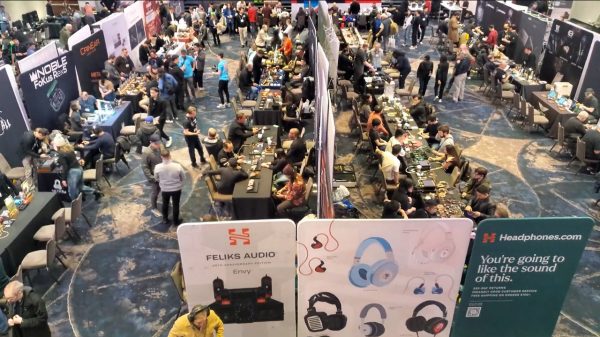

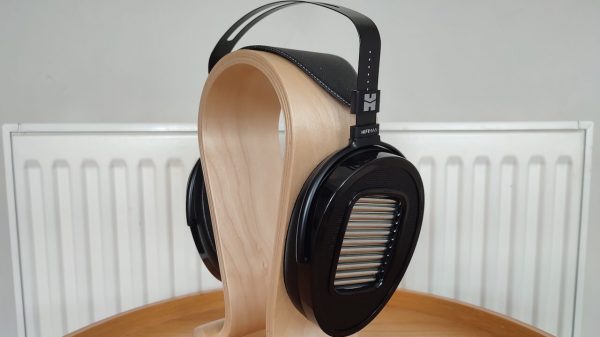















James Tremblay
July 2, 2021 at 12:18 pm
Typically German, British and other such manufacturers who use Chinese labor supply the parts they choose to use; they do not buy off the shelf Chinese caps, resistors, drivers, etc. The term Chi-fi is used about Chinese gear that is, whether you PC fools want to admit it or not, inferior in both design and construction, sold cheaply on eBay and includes such travesties as DartZeel knock-offs, fake Krell gear, fake Quad electronics, etc. Audio is not a hobby that needs to have your two cents on political correctness thrown in. Chi-fi is, always has been and always will be subject to extreme caution. That you even wrote these, to me, negates the quality and accuracy of anything you review and/or comment on. Unless, of course, you are Chinese as well, in which case kudos for waving the red flag.
Ian White
July 2, 2021 at 1:31 pm
James,
1. Calling us “PC” is one of the strangest things I’ve read in a long time. I’m possibly the least PC audio reviewer around and take a daily beating on social media for being Jewish, Conservative, and a staunch supporter of Israel. 1/2 of my family lives in Israel and I’m the grandson of survivors. I would be careful about tossing around that comment at any of our staff who are all quality people who have the right to express their views.
2. Perhaps because you don’t spend enough time behind the scenes in the industry, you don’t see how the term is used by “audiophiles” on many social media platforms in a derogatory manner about Chinese companies, Chinese engineers, and Chinese products.
3. We know that the high-end brands don’t use off-the-shelf components in their factories in China, but they are also extremely quiet about the behavior of the Chinese government and their use of slave labor. Out of sight? Out of mind?
PC? Don’t make me laugh.
Ian White
Phil
July 4, 2021 at 12:42 pm
Marantz, Denon, Polk Audio are now produced in Vietnam…anyone remember the predictions Nixon et al made about where this nation would go??? Quality control is unknown in China and many of what I have bought from HDMI cables, AC adopters have been inferior…I ended up buying a premium American made HDMI long cable and it works always…V-2,V-1 rockets were made in Germany by Slave Labor…China is a bad actor but when in doubt…look at the profits U can make…
Ian White
July 4, 2021 at 2:25 pm
Phil,
It’s very strange what is going on. Some of the Chinese brands like Questyle and Topping make excellent products with superb QC. As good as anything made in N. America or Europe. KEF, PSB, NAD, Bluesound, Quad, Wharfedale and others have their loudspeakers manufactured and assembled in China and the quality is excellent. They do it there because it’s dramatically cheaper than a similar setup in Ontario, or England. It’s about profit margins.
nwwoods
January 3, 2022 at 1:27 am
“Quality control is unknown in China”
Really? And yet my NAD M32, Martin Logan speakers, Bluesound Node, iPad and iPhone all seem to be functioning quite reliably up to spec. and have never required service.
By the way, the USA employs slave labor derived from correctional institutions.
“Penal labor in the United States is explicitly allowed by the 13th Amendment of the U.S. Constitution”, unless you view $0.60/day (Colorado) or $0.00/day (Texas) as paid labor.
“Bad actor USA”, but look at the profits you can make.
Ian White
January 3, 2022 at 1:30 am
You left out KEF LS50s, Polk Audio L100s, and every loudspeaker made by Quad, Wharfedale, and Mission.
Ian White
Erik L Scott
July 7, 2021 at 10:30 pm
For me I feel that it’s how individuals infer the word. Originally I believe it was meant as better performing for a dollar audio products. Maybe I’m wrong. I also myself don’t feel it’s a derogatory term. Because for me my view is that the term is meant to be better performing per dollar audiophile borderline quality. I think of it in a positive manner. Because let’s be honest some of the brands that have emerged are actual contenders in the audiophile world. Look at the legacy line of iems by a very popular seller. And there are tons of what I would consider expensive $500 or more iems by very good manufacturers that are still be considered ChiFi. I tell people I’m into this chifi Thing and proud of it. I also communicate with a lot of sellers over there and have what I feel are very nice relationships. I have certain people that I deal with on the almost daily level. I think the Chinese culture itself is a phenomenal culture. Yes even if it is communist and it does have its shortcomings but every country has its shortcomings. For myself I’m going to continue using the term and wearing it proudly and I’m a 6’5 500 lb blonde hair blue-eyed American Norwegian. Thanks guys
Ian White
July 8, 2021 at 12:20 am
Erik,
I like your philosophy in regard to this. I do think some people use the term in online forums as a derogatory phrase. I don’t hear people saying “Jap-Fi,” or “Ger-Fi.”
The truth is that there are people in China who make cheap knock-offs of established products and you will never see us write anything nice about those.
On the other hand, there are Chinese companies (Questyle, Topping) making excellent products that I would proudly own. 1More? I own 3 pairs of their headphones.
HiFiMan? I own 6 pairs of their headphones.
I think people should keep the politics out of it and just appreciate good products for what they are. Good products.
IW
WILLIAM SIZER
October 15, 2021 at 3:36 am
Given the bellicose stance that China is currently taking against Taiwan and the United States, how do you feel about the fact that those of us who purchase Chinese products are basically pumping money into the Chinese economy? I’m kind of on the fence with regard to this issue (i.e., I like Hifiman headphones) and can see it from different perspectives. Should we be avoiding Chinese products at this time? I’m sincerely interested in your opinion(s).
Ian White
October 15, 2021 at 11:40 am
William,
I’m definitely pro-Taiwan in my own personal politics and rather anti-CCP, but I don’t see how one can penalize a brand (like HiFiMAN…I own 5 of their headphones) for the actions of the government in Beijing.
It is a reality that when you buy from Chinese brands that you’re supporting the government, but why should their employees suffer?
And what about the 2-3 dozen brands that make everything in China? Wharfedale, Klipsch, PSB, Quad, KEF..it’s a really long list of companies that pay taxes to the CCP by having their manufacturing in China.
If China decided to invade Taiwan…the issue of which component you buy would become a lot simpler because the sea lanes would be closed down due to conflict between multiple navies and the collapse of the global economy.
Ian White
Tim
January 2, 2022 at 2:05 pm
When I first heard the term Chi-fi I assumed it was complimentary, and referred to the rise of high quality, low cost iems and DACs from China. It didn’t occur to me it was derogatory. But I don’t use the term.
I also don’t blame those who are turned off by the flood of bootleg products like $300 “DartZeel” amps that fill Ebay search results. The problems of piracy, IP theft, and an authoritarian permanent political power structure that has devolved into outright dictatorship under Xi, are legitimate beefs and are rapidly becoming nightmares for global security in the coming years. So ease off the simplistic “racist” labels too. An ill-formed, inarticulate shorthand for a valid distrust of corrupt slave states isn’t a bad thing. And maybe we *should* be pressuring western companies to do more locally. Would you say that Schiit is “racist” for not sourcing more parts or manufacturing from China?
Ian White
January 2, 2022 at 3:58 pm
Tim,
There are a few things to unpack in your response.
Will made it rather clear that China’s behavior towards its own people and its practice of IP theft is unacceptable. None of us find their behavior ok. I’m more of a foreign policy wonk and I follow Chinese military and political activities with great interest. The government is the problem — not the Chinese people.
I think Will’s bigger point is the hypocrisy of people who use the term but are fine buying western products often made in the exact same factories.
I think Schiit Audio is a model for the future. I own 5 of their products and love their domestic approach.
Ian White
Tim
January 2, 2022 at 5:45 pm
Hi Ian, it wasn’t clear but I was asking rhetorical questions, not accusatory ones. All the best, Tim
BobPM
January 2, 2022 at 4:25 pm
Chinese Hi-fi has turned around in recent years, and it would be great to get some serious comparisons with US/Euro competitors. ASR has reviewed numerous DACs and Amps and you can see a number of brands trying for the quality slot.
I am all for paying attention to Chinese labor and environmental policies as reasons to avoid certain products or to add tariffs, but its hard to differentiate these companies from Western companies exploiting cheap labor and lax environmental laws. My opinion is that the start-up Chinese engineers are the hungry ones that are innovating and lowering prices, and not the ones that should be saddled with accountability for their government’s actions.
Honestly, this is a lot like the arc of Japanese and Korean manufacturing. Start with cheap knockoffs, move to low cost manufacturing for foreign companies, develop internal skill set and innovate. It will be interesting to see how the market looks in 10 years.
Tim
January 2, 2022 at 5:54 pm
Hi Bob, I’m excited for the future. I also notice that excellent components from Asia are costing more and more – – no doubt due to current economic challenges, but also because it’s simply not possible to make reference level gear with the cheapest parts and labor available. A Topping 90 series DAC/Pre stack will cost you what now, $1400? A HiFi Rose is around $2500. At those levels some of the brilliant components coming out of Eastern Europe start looking like bargains. The market changes constantly, which is why I don’t bug out based on country of manufacture.
Ian White
January 2, 2022 at 6:53 pm
Tim,
I own the $2,500 HiFi Rose streamer and it’s a great product. I’m also a long-term HiFiMan customer. I generally don’t care where products are made but only that they are good and offer excellent performance for the money.
Ian White
Tim
January 2, 2022 at 9:29 pm
Understood, Ian, I’m referring to the expectation that many consumers have of getting top performance for peanuts from Asia. The Rose is similarly priced to the Naim, NAD, and Cambridge EVO products, and at $1400 the Topping stack (I own the Pre90) is equal to an Oktoresearch DAC8 Stereo w/ streamer (also own). I’m just pointing out that the price differential is closing somewhat, which will further affect consumer behavior.
Ian White
January 3, 2022 at 12:25 am
Tim,
I agree with you. The price differential is closing rapidly to say the least. I expect to see some Chinese products get insanely expensive in the near future.
Ian
Ian White
January 2, 2022 at 6:51 pm
Bob and Tim,
I own 5 pairs of HiFiMan headphones, the HiFi Rose RS201e streamer, and we’ve done multiple reviews of the Topping equipment this year.
All great products.
Ian White
nwwoods
January 3, 2022 at 12:42 am
“..more developed counterparts coming from the United States, Canada, U.K, France, Germany, and Japan.”
I have no doubt you would have intended to include Denmark which probably has more hi-end hi-fi development and production per capita than the rest of them combined.
Brian Doherty
January 3, 2022 at 7:01 pm
Disappointing. This looks to me like the author started out with their opinion that this term was offensive, then proceeded to selectively choose things to support that point of view. I was introduced to the term chi-fi by an article in the WSJ a few years ago, which basically said very good equipment could be found at relatively low prices from Chinese manufacturers, mostly because the brands were unknown in the US. It did not say the equipment was junk, or that Chinese engineers aren’t talented – it was actually more about discovering hidden gems. Just one article, of course, but my experience is that this is the more typical attitude among audio enthusiasts. And for this author to point out that some audiophiles online have been known to disparage Chinese manufacturing is hardly a shock. Audiophiles online are known to disparage everything and everybody, as several articles on this very web site pointed out recently.
Ian White
January 3, 2022 at 7:16 pm
Brian,
I think the article is pretty clear. Audiophiles who use the term to disparage Chinese-designed equipment which can be found (as you point out) at very reasonable prices, have seemingly no issues with the stuff they buy from N. American and European manufacturers made in the same factories in China. Will is focused in the Head-Fi space and he’s a big proponent of Chinese-designed products (Topping, HiFiMan) which offer fantastic performance for the money.
Our issue is that people take a dump on Chinese-designed products and throw in “Well..the CCP does this” as their main argument but are perfectly fine buying a pair of LS50s which are made in China because it’s cheaper and made by KEF.
Happy New Year!
Ian
Brian Doherty
January 3, 2022 at 8:29 pm
Ian, I don’t want to get into a back-and-forth here. I’ll just say this article rubbed me the wrong way. Mostly it just struck me as a weak argument. The next time I visit, I hope to see more of what I consider your strength: well-written, thoughtful reviews of audio equipment.
Ian White
January 4, 2022 at 12:27 am
Brian,
Fair enough and I appreciate that you read us.
Best,
Ian White
ラキントウ
January 4, 2022 at 3:28 am
I am from Japan and I very much agree with the points made in your article. It seems to me that this is the last line of defence of some people’s stubbornness and self-righteousness. Chinese audio products and headphones etc. may have had a lot of problems in the early days, but in the last five years many Chinese brands with technology have taken over the Japanese market and have completely (or almost) beaten the Japanese brands in terms of price and refinement of products and sound (or also because many of the Japanese brands are not doing well themselves) leaving only Sony and Jvc are still active. We all resent the brutal repression of the Chinese Communist Party, but the boycott of Chinese production and Chinese manufacturing should have started with the government, and if the US government or the Japanese government completely and utterly rejected any Chinese items, I would have to support that as well. If that is not possible (no one can ask a civilian to do anything, that is a personal choice) then why don’t I shop for better value for money or agree with the higher end Chinese products that have received good reviews with a very wide range of choices from low to high end (there are no perfect items) to disparage please also make products that beat Chinese brands across the board (in every way.) If you want to disparage, make products that beat Chinese brands across the board (in every way.)
Translated with http://www.DeepL.com/Translator (free version)
BobPM
January 4, 2022 at 7:03 pm
Chinese production, and indeed other southeast asian production, should be scrutinized and tariffed to account for abusive labor practices and lax environmental enforcement. If we in the developed countries place these requirements on our own producers and then simply import the items for foreign suppliers, we are not helping people or the environment and are simply facilitating the offshoring of production (and knowledge) out of the country. Various trade agreements provide for this, but these provisions are almost never enforced.
I do not however, understand this to be the case with the small startup audio equipment producers that are trying to compete on quality.